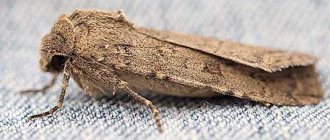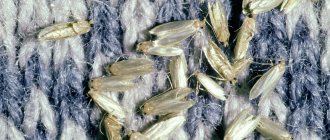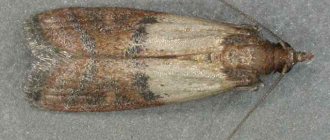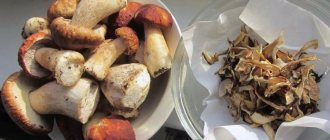For many centuries, people have struggled with pests such as moths. After all, this insect is voracious and consumes food, wool and fur items, and some materials. Mothballs, chemicals and insecticides were used for control. But for adherents of folk remedies, moth herb is more suitable. This product is effective and safe. Before using plants to scare away and create a buffer zone, you need to become familiar with their properties and characteristics.
Lavender
This is an evergreen, heat-loving shrub with soft purple inflorescences, which is considered to be native to the Mediterranean. Moth lavender blooms in the height of summer and has a very strong and pleasant aroma that lingers in both fresh and dried stems and leaves. That is why freshly cut shoots and pharmaceutical preparations are used to repel moths.
How to use lavender for moths? It can be applied in several ways:
- Prepare a decoction for wet cleaning;
- Crush crushed and dried grass in the corners;
- The collection is poured into fabric bags and hung indoors.
Description of the moth
Moth larvae.
Scientists have counted several thousand species of moths. It feeds on grains, mushrooms, fur, wool, feathers and much more. The moth reproduces very quickly, laying eggs. Adults are not so scary, but when the larvae hatch, they destroy everything in their path.
Coping with such pests is quite problematic. Herb against moths is very effective as a prophylactic agent, because it is easier to prevent its occurrence than to fight it later.
Ledum
This plant with soft white flowers can be found in forests and fields. It blooms almost the entire season. Ledum is often used in the fight against domestic insects, including moths. The main thing is not to overdo it - the strong aroma of this shrub can cause dizziness and nausea. To create bouquets, 2-3 branches are enough - moths will hear the smell, but for humans it will remain invisible.
Rose rosemary is an excellent moth repellent, however, you should be careful, as the plant is poisonous
Advice! Ledum is a poisonous plant, so you must be careful when collecting it yourself.
Myrtle
The culture is an evergreen shrub with woody shoots. The red-brown trunk of myrtle, as well as its skeletal branches, are covered with shiny, leathery leaves. The shape of the plates is lanceolate or oval. Flowering begins at the very beginning of summer, and by autumn the black and blue fruit beads ripen.
Characteristic
Myrtle is an essential oil plant. Its leaves are a spice, and the entire tree emits a strong, specific aroma. Aldehydes in the essential oil repel moths and give the scent a subtle lemony tint.
Myrtus communis (common myrtle) is most often cultivated at home. It has a short scaly trunk, bright, fragrant leaves, and white or pink single flowers. During the flowering period, the tree looks “fluffy” due to the numerous long stamens growing from the center of each bud.
Features of planting and care
Moth flowers need plenty of sunlight. Without sufficient lighting, aromatic substances are not synthesized and plants lose some of their aroma. The main condition for the successful growth of myrtle is a sunny place for the pot. At the same time, good lighting is needed all year round, even during the dormant period.
Myrtle requires meticulous care with regular watering, maintaining humidity, and fertilizing with special compounds. Separately, gardeners are recommended to study methods of forming myrtle trees to obtain colorful compositions, compact trees or bonsai-style plants.
Tansy
Unlike lavender, tansy is very common in our area. It grows in fields, vacant lots, and near roads. Its bright yellow inflorescences, popularly called “wild rowan”, can be seen even among the urban jungle!
Tansy is considered a medicinal plant - anthelmintic compounds are often prepared from it, but it also helps against indoor moths. Moreover, tansy collection is considered the most powerful insect repellent! Using tansy is simple - place dry sprigs of the herb or its powder in the closet (you can buy it at the pharmacy or prepare it yourself). After some time, the insects will disappear.
Tips to help get rid of moths forever:
Rosemary
It is a well-known culinary herb with anti-moth properties. The principle of using rosemary is the same - its branches are laid out on shelves or filled with thin fabric bags. The plant is often grown in flowerpots, which is also very useful. If desired, you can take rosemary essential oil.
Advice! The scent of rosemary is not particularly persistent, so this product requires frequent updating.
Thyme
It is truly impossible not to notice this fragrant grass in fields or meadows! It has such a persistent smell that your hands will smell all day long after touching the shoots. At the same time, the aroma is not intrusive and pleasant.
Thyme has a very beneficial effect on humans - it has a tonic and invigorating effect, improves blood circulation and metabolism, and helps to quickly restore the body after illness. But it has a negative effect on moth butterflies. To quickly remove all insects, place bouquets of thyme in your apartment and closets.
Larvae
These transitional insect organisms are the most important pests. Caterpillars eat a large amount of lint, which is why bald spots and holes are clearly visible on products. The larva has a white or yellowish color and is small in size. The head of the caterpillar has a brown tint, and small legs are located on the body. The body is adapted to active movement and eating surfaces. Usually there are no holes on fur products, but as the insect moves, a gnawed path remains. Moth larvae are easily transported from one place to another along with clothing, so moths can be brought in if old things were brought into the house from outside.
At the first sign of flying insects, it's a good idea to inspect your closets and carpets. All damaged items must be removed. Treatment for prevention is carried out several times a year.
Dill
Perhaps the most accessible plant against household pests. Its Latin name - anetum graveolens or strong-smelling - speaks for itself. This spice has a sharp and rather specific aroma that is difficult to confuse with anything else. You can safely use both fresh bunches of dill and crushed and dried powder.
Geranium (pelargonium)
In the fight against insects, indoor plants against moths are also useful. The main advantage of geranium is that it blooms all year round. The plant prefers brightly lit window sills. Pelargonium exhibits its fragrant aroma, which pests do not like, after lightly pressing the leaf or stem. Only cut leaves smell just as strong, so they can be laid out on cabinet shelves.
Advice! The aroma quickly disappears from dry geranium leaves, so they need to be replaced with fresh ones.
If you do not have a living plant, use pelargonium essential oil - add it to the water during wet cleaning (25 drops per 1 liter).
Or you can use these tips:
Getting Close to the Enemy
Today there are more than 3,000 species of pests. They are found everywhere. Insects feed on down, feathers, mushrooms and grains, wool and fur. Some representatives settle near bird nests or rodent burrows. Housewives and summer residents most often encounter the following types:
- Cereal.
- Barn.
- Clothes.
- Fur coat.
- Furniture.
Many people know the name of an anti-moth plant that is used to create a buffer zone or repel insects. Repellent herbs are used to repel pests with a rich aroma. The insect has legs and antennae on which sensilla are present. Sensillae allow moths to capture aromas that are in the air. Since the olfactory organs of insects are highly sensitive, they pick up odors better.
Only male representatives move around the apartment or country house. Females choose secluded places for later laying eggs. The adult pest does not feed on food or things. The integrity of fur products or furniture upholstery is damaged by the larvae. They are distinguished by a developed oral apparatus and strong jaws, through which they bite off fibers or penetrate inside plastic packaging.
Plectranthus (moth tree)
What flower repels moths? In addition to geranium, plectranthus, a small shrub brought to us from South America, also has such beneficial properties. In our country, the “molar tree” is valued for its ease of care and fresh aroma. The smell of plectranthus is reminiscent of mint, camphor, lemon balm or lemon. It perfectly purifies the air in the house and allows you to get rid of moths in the shortest possible time.
Who eats our clothes
The clothes moth (also known as the house moth) is a small butterfly with golden wings with fringed edges. However, she is not the main enemy of our things. Irreparable damage to the wardrobe is caused by its larva - a transparent white caterpillar up to 1 cm long. The caterpillar is very lazy, inactive, but when it needs to find food for itself, it begins to move.
When you see a moth flying around the house, you don’t even have to run after it, trying to swat it. The fact is that only males or females who have already laid eggs fly. They will no longer bring you harm, and they will soon die themselves. You need to hunt for their eggs and larvae.
How moths get into our houses and apartments
The easiest way is through an open window or door. However, clothes moths are also capable of entering a home through a narrow gap. The flying butterfly finds suitable conditions for reproduction and food and lays eggs there.
If you brought an antique or simply used sofa from somewhere, it is quite possible that there were already eggs or moth larvae in its upholstery. The same goes for used clothes.
Clothes moth larvae can come to us, although rarely, through the fur of domestic animals.
Fragrant tobacco
Moths are afraid of the smell of tobacco, so it can safely be called another effective home remedy. Do not confuse fragrant tobacco with smoking tobacco! The first is a houseplant, the second is a mixture for cigarettes and pipes. However, you can use both options! Pour the crushed tobacco into small textile bags and place them in cabinets. Don't forget to ventilate your wardrobe from time to time.
Place dried bunches of fragrant tobacco in the wardrobe where things are stored and moths will leave your home
Tobacco should not be placed in the pockets of clothing in order to protect it from moths. Things will become saturated with a specific aroma, which is very difficult to get rid of.
Oregano
A well-known medicinal plant among culinary specialists goes by different names depending on the variety: oregano, marjoram, wild mint. Popular names for common herbs are oregano, motherwort, incense. The perennial gray-green grass grows no higher than 50 cm, its stems are densely covered with ovate leaves with fine serrations along the edges. Small flowers are collected in wide, corymbose panicles.
Characteristic
The seasoning has a specific, spicy smell, for which it is popularly called flea grass and bug grass. The plant has long been used to repel small household pests, moths, mosquitoes, and bedbugs.
Special oregano hybrids have been created for home breeding:
- White oregano is a high-yielding variety with rapid growth of greenery;
- Arbatskaya Semko is a tall bush that requires a large container for planting;
- Fragrant bunch - a variety no more than 30 cm in height with a strong odor;
Honey aroma is a particularly fragrant variety of homemade oregano, when in bloom the scent spreads 3 m around the bush.
Oregano repels moths when fresh and does not lose this property when dried. To get rid of butterflies, you can use store-bought oregano seasoning or oregano herb. It is enough to pour the crushed raw materials into fabric bags and leave them in the closet.
Features of planting and care
Wild oregano can survive cold winters by regrowing in the spring. Domestic varieties are thermophilic, but do not tolerate heat well. For active growth of aromatic grass, loose soil, regular watering, and occasional fertilizing with universal products are sufficient.
Wormwood
What is the name of the plant that repels moths? This title can also be awarded to wormwood, which is often used in folk medicine and households. The plant grows in sunny forest glades and in dry ravines near rivers. Stems and inflorescences should be collected in June. Then they are thoroughly dried in a dark place and used for their intended purpose - laid out in bags or tied into bouquets and hung. To enhance the effect, wash the floors and furniture with a decoction of wormwood - a pleasant aroma will get rid of moths and create the atmosphere of a summer meadow in the house.
Lemon Balm
Melissa is another herb that has medicinal properties and a scent that repels moths. The plant is often called lemon balm because of its characteristic scent. Melissa bushes are very decorative, have faceted, branched stems covered with heart-shaped, serrated leaves. The flowers are inconspicuous and small.
Characteristic
Melissa grows well in a pot, provided the right variety is chosen. The variety is selected not only by appearance, but also based on its purpose.
Several compact varieties are suitable for indoor cultivation:
| Lemon tea | The plant emits a special citrus smell. An aromatic, tonic tea is prepared from its leaves. |
| Pure gold | Decorative hybrid with beautiful flowering. The first inflorescences are white, the last ones are blue. |
| Mojito | It has a pronounced smell and spicy taste. The variety is used in cooking and is often grown right in the kitchen. |
| Lemon scent | Compact plant for universal use. It can be grown at home, taken into the garden or planted outdoors. |
Melissa has a very subtle, refreshing aroma. There are no moths in a room where lemon balm grows. In closets and adjacent rooms, stems with leaves are used to protect against insects. Parts of the plant that are dried out in air lose their aroma, so they should be replaced occasionally.
Features of planting and care
Melissa tolerates indoor cultivation well; it can be taken out to the balcony or terrace in the warm season. Delicate leaves cannot tolerate direct sunlight. Water the crop moderately; in hot weather, spray the leaves.
Melissa flowers usually have no decorative value and lead to thinning of the shoots. To preserve the decorative appearance and aroma of the leaves, it is recommended to remove lemon balm flower stalks immediately after they appear.
Chestnut
Few people know that chestnut fruits can repel almost all known household pests. They are collected at the end of autumn and dried well in the oven. Fresh chestnuts are not suitable - they will quickly mold and rot. The prepared fruits are laid out on shelves in wardrobes and cupboards. You don't need sachets or pouches.
This tool has a couple more advantages:
- The fruits are easy to pick;
- A person practically does not feel the smell of chestnuts, unlike moths;
- Chestnuts are quite large, so they are not capable of littering your home.
Folk remedies for moths based on strong-smelling plants only repel butterflies, but do not kill them. In addition, they do not have any effect on larvae and egg laying. To destroy them you will need stronger drugs.
Read more folk recipes on how to get rid of moths in this article -
Efficiency from vegetation
The butterfly lives only 2 weeks. During this time, she does not eat anything and does not pose a danger to food supplies. She looks for a suitable place for the eggs. After 3–5 days, larvae will appear from them, which from the first minutes will begin to devour cereals, flour, and dried fruits. The larvae can be killed either by freezing or by strong heating. You can use insecticides. Smells do not play a special role for them.
To prevent butterflies from settling in, plants with a repellent scent are used. It just creates an unfavorable environment. In case of severe infection, you need to use the products in a comprehensive manner. Interestingly, most professional drugs are based specifically on repelling.
To quickly cleanse your home of parasites, you need to:
- Conduct an audit and check all stocks. Most likely, they will have to be thrown away. And new ones should be placed in sealed jars.
- Wash the cabinet with the addition of a tincture of any plant listed above.
- Place fresh plant branches or dry collection in the corners. Change protection periodically.
When used correctly, the effectiveness will be 100%. The result can be achieved in 1 month. If new moths appear, they will definitely not be able to produce offspring and will simply die after 2 weeks. This completes the chain. To avoid re-infection, you need to try to find out the cause and avoid such situations.
A few more tips:
Now you know which plant repels moths with its smell. Finally, remember a few important rules:
- Anti-moth plants should be used immediately, avoiding severe infestation of the room with butterflies;
- Change the products periodically - once the insect gets used to one scent, it will stop reacting to it. Remember, dry herbs retain their fragrant properties for 2-3 months;
- For an enhanced attack, use a whole collection of aromatic plants.
See also: How to get rid of moths?
Where do moths come from in an apartment and how to get rid of them? This is interesting to know!
Precautionary measures
In an attempt to get rid of uninvited guests, housewives often resort to a remedy such as vinegar. To do this, pour vinegar into a hot frying pan and add a few drops of essential oils. The smell coming from the fumes is unbearable for moths.
And if you wipe the places where the eggs are deposited with vinegar, then all the larvae will die. The method is very effective. Just don’t neglect safety precautions.
People with allergic reactions or intolerance to any substances should approach the choice of any means for the destruction and prevention of moths with caution.











